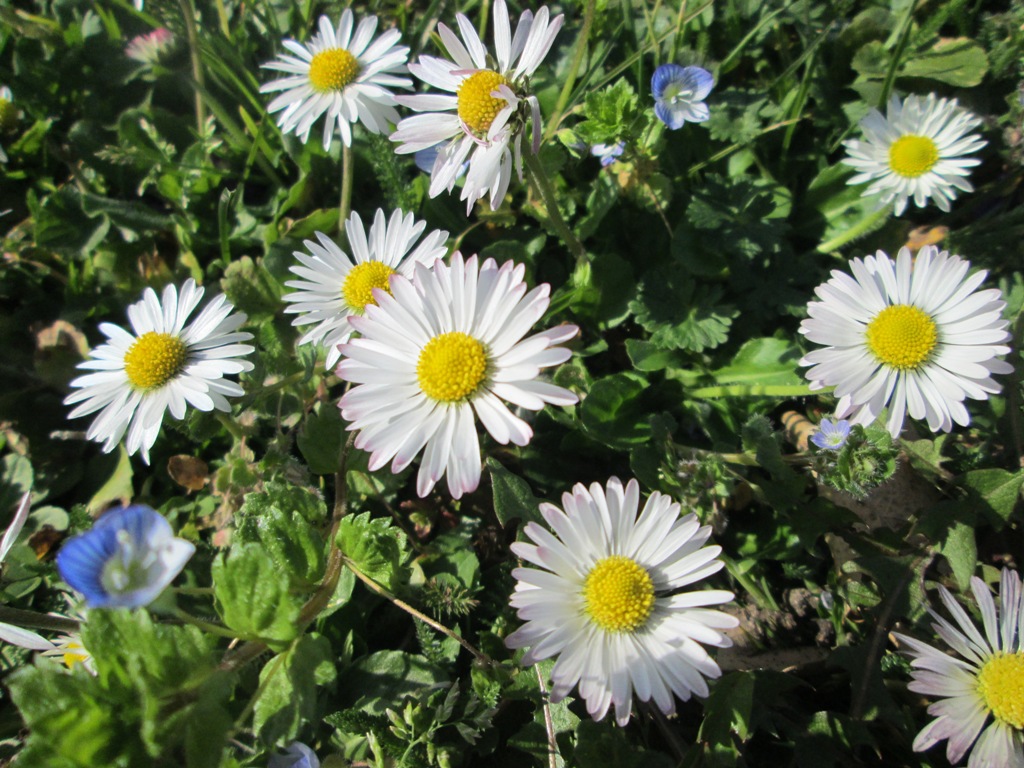
In my last blog I introduced you to the main uses of the Asteraceae or the Daisy family. The first post was all about the classification of this large family.
Today I will list some of the commonly known, medicinal ones in our temperate climate, as mentioned in the Medicinal Flora by Julian Barker.
I will include links on both of the plant names so you will be able to read more about each plant on other useful websites. You can find more pictures on Wikipedia> tools >Wikipedia Commons as well as in the Gallery of Plant Atlas 2020 Online.
I will also colour code the blocks on the colour of the flower. Hope you will find that useful as well as pretty! Most uses are medicinal. Plants used as an ornamental or other uses are backed by a green colour! The link on the Scientific name as well as the information about habitat is from Plant Atlas 2020 Online (backed by blue).
Cautions: This is a ‘ethno’ blog on the known medical uses of the Composites or Daisy family. There are many cautions mentioned and self-medication is therefore not advised: seek help through a qualified herbalist!
Contents:
Eupatorium cannabinum or Hemp Agrimony Solidago virgaurea or Golden Rod
And 4 other species:
- Solidago canadensis or Canadian Goldenrod
- S. gigantea or Early Goldenrod
- S. rugosa or Rough-stemmed Goldenrod
- S. sempervirens or Salt-marsh Goldenrod
Bellis perennis or Daisy Erigeron canadensis or Canadian Fleabane
And 10 more species of Erigeron on the B. I.:
- Erigeron acris or Blue Fleabane
- E. annuus or Tall Fleabane
- E. bonariensis or Argentine Fleabane
- E. borealis or Alpine Fleabane
- E. floribundus or Bilbao Fleabane
- E. glaucus or Glaucous-leaved Fleabane and Seaside Daisy
- E. karvinskianus or Mexican Fleabane
- E. philadelphicus or Robin’s-plantain and Philadelphia Fleabane
- E. speciosus or Garden Fleabane
- E. sumatrensis or Guernsey Fleabane
Gnaphalium uliginosum or Marsh Cudweed
other former Gnaphalium spp. found:
- Gnaphalium dioicum – now Antennaria dioica or Mountain Everlasting (see below)
- G. germanicum- now Filago germanica or Common Cudweed
- G. luteo-album – now Laphangium luteoalbum or Jersey Cudweed (Neophyte)
- G. margaritaceum – now Anaphalis margaritacea or Pearly Everlasting (Neophyte)
- G. minimum – now Logfia minima or Small Cudweed
- G. norvegicum – now Omalotheca norvegica or Highland Cudweed
- G. pensylvanicum and G. purpureum – now Gamochaeta purpurea or American Cudweed (Neophyte)
- G. polysephalum and G. undulatum – now Pseudognaphalium undulatum or Cape Cudweed (Neophyte)
- G. supinum – now Omalotheca supina or Dwarf Cudweed
- G. sylvaticum and varieties – now Omalotheca sylvatica or Heath Cudweed
Antennaria dioica or Cat’s foot, Life Everlasting and Mountain Everlasting Inula helenium or Elecampane
- Inula conyzae or Ploughman’s-spikenard
- I. hookeri or Hooker’s Fleabane (Neophyte)
- I. oculus-christi or Hairy Fleabane (Neophyte)
- I. salicina or Irish Fleabane (Native in Ireland)
Pulicaria dysenterica or Common Fleabane
- Pulicaria vulgaris or Small Fleabane
Bidens tripartita or Bur-marigold, Trifid Bur-marigold
- Bidens cernua or Nodding Bur-marigold
- B. connata or London Bur-marigold (Neophyte)
- B. ferulifolia or Fern-leaved Beggarticks (Neophyte)
- B. frondosa or Beggarticks (Neophyte)
- B. pilosa or Black-jack (rare Neophyte)
Xanthium strumarium or Common Cocklebur
- Xanthium spinosum or Spiny Cocklebur
Gallinsoga parviflora or Gallant Soldier, Kew Weed
- G. quadriradiata or Shaggy Soldier
Achillea ptarmica or Sneezewort A. millefolium or Yarrow
- Achillea distans or Tall Yarrow (Neophyte)
- A. filipendulina or Fern-leaf Yarrow (Neophyte)
- A. ligustica or Southern Yarrow (very rare Neophyte)
- A. maritima or Cottonweed
- A. nobilis or Noble Yarrow
The Chamomiles and Related plants
1) Anthemis cotula or Stinking Mayweed, Stinking Chamomile
- Anthemis arvensis or Corn Chamomile
- A. punctata or Sicilian Chamomile (Neophyte)
2) Chamaemelum nobile or Roman Chamomile 3) Matricaria chamomilla or German Chamomile 4) Matricaria discoidea or Pineapple Weed or Rayless Mayweed
Tanacetum vulgare or Tansy Tanacetum parthenium or Feverfew
- Tanacetum balsamita or Costmary (Neophyte)
- Tanacetum macrophyllum or Rayed Tansy (Neophyte)
Leucanthemum vulgare or Ox-eye daisy
- L. × superbum or Shasta Daisy
